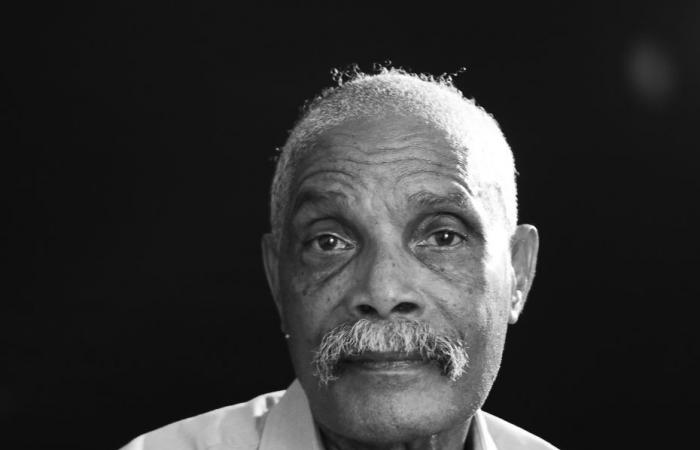At the beginning of his career as a visual artist, Gabriel Baptiste distinguished himself as a committed painter, whose works carried strong messages. They quickly generated a real craze in Guadeloupe, his native island. Today he sees himself rather as an artist with a limitless creative process in “a very free universalism” useful to the entire Caribbean.
“When I was a child, images were rare, so when I saw pictures of Van Gogh’s paintings it moved me to the core.”the famous Dutch painter was the first source of inspiration for young Gabriel. At just 10 years old he discovered his talent as a designer, he created characters for his playmates. “So it was very natural for me to take this path. Around the age of 19 or 20, I bought some paint and brushes and got started.”
His development as an artist subsequently led him to opt for a very particular technique in his creations, “I use tools that I make myself that allow me to do relief graphics.” Gabriel places his work between abstraction and figuration because he believes, without any pretension, to have been chosen like so many others to accomplish a mission on this earth: “When I succeed in a work, I tell myself that it does not come from me and that gives me the feeling of communicating with something greater than myself.”
Deeply rooted in his Caribbean culture, this son of Guadeloupe advocates a return to the land with an awareness of the values that shaped him, “Personally, I would have liked us to be more aware of who we are, to have more confidence in ourselves.” Gabriel thus returns to the social movements of 2009 against the high cost of living, a popular uprising which shook Guadeloupe, “There was a kind of enthusiasm, it was extraordinary, I had never experienced anything like it, but the test was not converted.” Producing locally by returning to Creole gardens, developing wind power, solar energy and pharmacopoeia in order to become master of one’s destiny leaves a bitter taste in the mouth of this nature lover.
For Gabriel, “The world needs beauty, artists and I think that this is how we can move towards an evolution that is beneficial for humanity.”






